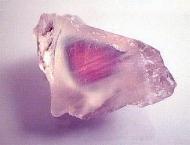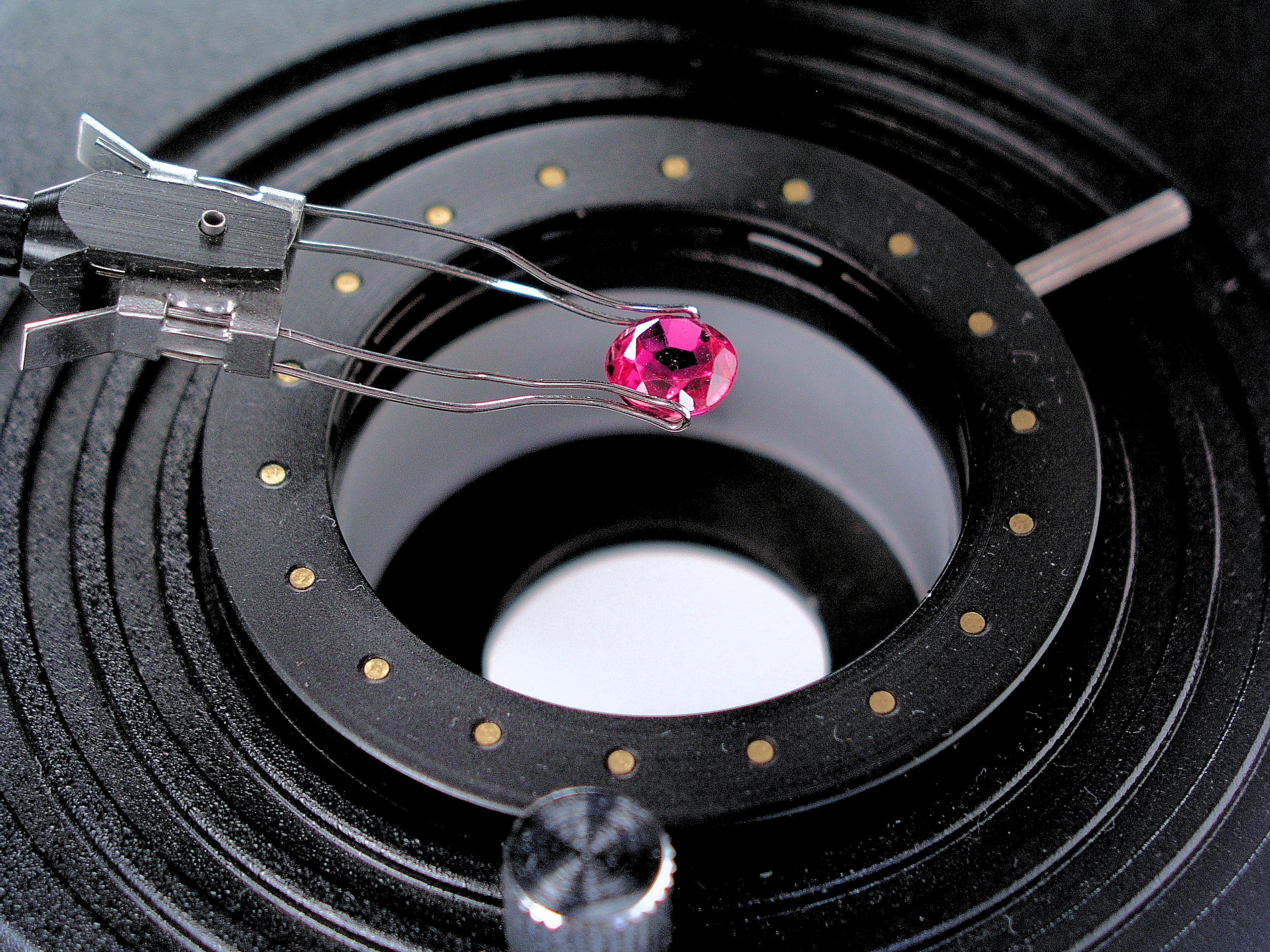|
Aventurescence
In gemology, aventurescence (sometimes called aventurization) is an optical reflectance effect seen in certain gems. The effect amounts to a metallic glitter, arising from minute, preferentially oriented mineral platelets within the material. These platelets are so numerous that they also influence the material's body colour. In aventurine quartz chrome-bearing fuchsite produces a green stone, and various iron oxide Iron oxides are chemical compounds composed of iron and oxygen. Several iron oxides are recognized. All are black magnetic solids. Often they are non-stoichiometric. Oxyhydroxides are a related class of compounds, perhaps the best known of w ...s produce a red stone. The words ''aventurine'' and ''aventurescence'' derive from the Italian "a ventura", meaning "by chance". This is an allusion to the chance discovery of aventurine glass or goldstone at some point in the 18th century. Goldstone is still manufactured today as an artificial imitation of later disco ... [...More Info...] [...Related Items...] OR: [Wikipedia] [Google] [Baidu] |
Goldstone (glass)
Goldstone is a type of glittering glass made in a low-oxygen reducing atmosphere. The finished product can take a smooth polish and be carved into beads, figurines, or other artifacts suitable for semiprecious stone, and in fact goldstone is often mistaken for or misrepresented as a natural material. Nomenclature Another common name for the material is aventurine glass, based on the original Italian name ''avventurina'' (from ''avventura'', "adventure" or "chance"). It is called "del-roba" (Persian: دلربا) in Persian which means "Charming"; or "monk's gold" or "monkstone" from folkloric associations with an unnamed monastic order. Goldstone also has a green brother ( green Goldstone ) and a blue brother ( blue Goldstone ). The material is sometimes incorrectly called sandstone when used in watch dials, and other jewelry, despite its lack of resemblance to the porous, matte texture of the natural stone. Additionally, "aventurine" glass is one of the few synthetic simula ... [...More Info...] [...Related Items...] OR: [Wikipedia] [Google] [Baidu] |
Aventurine Quartz
Aventurine is a form of quartz, characterised by its translucency and the presence of platy mineral inclusions that give it a shimmering or glistening effect termed '' aventurescence''. Background The most common color of aventurine is green, but it can also be orange, brown, yellow, blue, or grey. Chrome-bearing fuchsite (a variety of muscovite mica) is the classic inclusion and gives a silvery green or blue sheen. Oranges and browns are attributed to hematite or goethite. Because aventurine is a rock, its physical properties vary: its specific gravity may lie between 2.64-2.69 and its hardness is somewhat lower than single-crystal quartz at around 6.5. Aventurine feldspar or sunstone can be confused with orange and red aventurine quartzite, although the former is generally of a higher transparency. Aventurine is often banded and an overabundance of fuchsite may render it opaque, in which case it may be mistaken for malachite at first glance. The name ''aventurine'' derives ... [...More Info...] [...Related Items...] OR: [Wikipedia] [Google] [Baidu] |
Sunstone
Sunstone is a microcline or oligoclase feldspar, which when viewed from certain directions exhibits a spangled appearance. It has been found in Southern Norway, Sweden, various United States localities and on some beaches along the midcoast of South Australia. Properties Physical properties The optical effect is due to reflections from inclusions of red copper, hematite, or goethite, in the form of minute scales, which are hexagonal, rhombic, or irregular in shape, and are disposed parallel to the principal cleavage-plane. These inclusions give the stone an appearance something like that of aventurine, hence sunstone is known also as "aventurine-feldspar". The optical effect is called schiller and the color of Oregon Sunstone is due to copper. The middle part of this crystal sparkles, and usually the color is darkest in the middle and becomes lighter toward the outer edges. The feldspar which usually displays the aventurine appearance is oligoclase, though the effect is s ... [...More Info...] [...Related Items...] OR: [Wikipedia] [Google] [Baidu] |
Gemology
Gemology or gemmology is the science dealing with natural and artificial gemstone materials. It is a geoscience and a branch of mineralogy. Some jewelers (and many non-jewelers) are academically trained gemologists and are qualified to identify and evaluate gems. History Rudimentary education in gemology for jewellers and gemologists began in the nineteenth century, but the first qualifications were instigated after the National Association of Goldsmiths of Great Britain (NAG) set up a Gemmological Committee for this purpose in 1908. This committee matured into the Gemmological Association of Great Britain (also known as Gem-A), now an educational charity and accredited awarding body with its courses taught worldwide. The first US graduate of Gem-A's diploma course, in 1929, was Robert Shipley, who later established both the Gemological Institute of America and the American Gem Society. There are now several professional schools and associations of gemologists and certific ... [...More Info...] [...Related Items...] OR: [Wikipedia] [Google] [Baidu] |
Optics
Optics is the branch of physics that studies the behaviour and properties of light, including its interactions with matter and the construction of instruments that use or detect it. Optics usually describes the behaviour of visible, ultraviolet, and infrared light. Because light is an electromagnetic wave, other forms of electromagnetic radiation such as X-rays, microwaves, and radio waves exhibit similar properties. Most optical phenomena can be accounted for by using the classical electromagnetic description of light. Complete electromagnetic descriptions of light are, however, often difficult to apply in practice. Practical optics is usually done using simplified models. The most common of these, geometric optics, treats light as a collection of rays that travel in straight lines and bend when they pass through or reflect from surfaces. Physical optics is a more comprehensive model of light, which includes wave effects such as diffraction and interference that can ... [...More Info...] [...Related Items...] OR: [Wikipedia] [Google] [Baidu] |
Gemstone
A gemstone (also called a fine gem, jewel, precious stone, or semiprecious stone) is a piece of mineral crystal which, in cut and polished form, is used to make jewelry or other adornments. However, certain rocks (such as lapis lazuli, opal, and obsidian) and occasionally organic materials that are not minerals (such as amber, jet, and pearl) are also used for jewelry and are therefore often considered to be gemstones as well. Most gemstones are hard, but some soft minerals are used in jewelry because of their luster or other physical properties that have aesthetic value. Rarity and notoriety are other characteristics that lend value to gemstones. Apart from jewelry, from earliest antiquity engraved gems and hardstone carvings, such as cups, were major luxury art forms. A gem expert is a gemologist, a gem maker is called a lapidarist or gemcutter; a diamond cutter is called a diamantaire. Characteristics and classification The traditional classification in the Wes ... [...More Info...] [...Related Items...] OR: [Wikipedia] [Google] [Baidu] |
Mineral
In geology and mineralogy, a mineral or mineral species is, broadly speaking, a solid chemical compound with a fairly well-defined chemical composition and a specific crystal structure that occurs naturally in pure form.John P. Rafferty, ed. (2011): Minerals'; p. 1. In the series ''Geology: Landforms, Minerals, and Rocks''. Rosen Publishing Group. The geological definition of mineral normally excludes compounds that occur only in living organisms. However, some minerals are often biogenic (such as calcite) or are organic compounds in the sense of chemistry (such as mellite). Moreover, living organisms often synthesize inorganic minerals (such as hydroxylapatite) that also occur in rocks. The concept of mineral is distinct from rock, which is any bulk solid geologic material that is relatively homogeneous at a large enough scale. A rock may consist of one type of mineral, or may be an aggregate of two or more different types of minerals, spacially segregated into disti ... [...More Info...] [...Related Items...] OR: [Wikipedia] [Google] [Baidu] |
Fuchsite
Fuchsite, also known as chrome mica, is a chromium (Cr) rich variety of the mineral muscovite, belonging to the mica group of phyllosilicate minerals, with the chemical formula . Trivalent chromium replaces one of the aluminium (Al) atoms in the general muscovite formula producing the apple green hue distinctive of fuchsite. It is often found in minute micaceous aggregates (with individual plates barely visible), as a major component of chromium rich phyllitic or schistose metamorphic rocks of the greenschist facies. Verdite is a type of metamorphic rock made mostly of an impure, often multicolored, variety of fuchsite. It is used for ornamental carvings. Fuchsite is named after the German chemist and mineralogist Johann Nepomuk von Fuchs. Properties Fuchsite crystallizes in the monoclinic crystal system. Common colour of the mineral is pale green to emerald green depending on the amount of Cr substitution. The micaceous crystals are flexible and slightly sectile with a hard ... [...More Info...] [...Related Items...] OR: [Wikipedia] [Google] [Baidu] |
Iron Oxide
Iron oxides are chemical compounds composed of iron and oxygen. Several iron oxides are recognized. All are black magnetic solids. Often they are non-stoichiometric. Oxyhydroxides are a related class of compounds, perhaps the best known of which is rust. Iron oxides and oxyhydroxides are widespread in nature and play an important role in many geological and biological processes. They are used as iron ores, pigments, catalysts, and in thermite, and occur in hemoglobin. Iron oxides are inexpensive and durable pigments in paints, coatings and colored concretes. Colors commonly available are in the "earthy" end of the yellow/orange/red/brown/black range. When used as a food coloring, it has E number E172. Stoichiometries Iron oxides feature as ferrous (Fe(II)) or ferric (Fe(III)) or both. They adopt octahedral or tetrahedral coordination geometry. Only a few oxides are significant at the earth's surface, particularly wüstite, magnetite, and hematite. * Oxides o ... [...More Info...] [...Related Items...] OR: [Wikipedia] [Google] [Baidu] |
Mineralogy
Mineralogy is a subject of geology specializing in the scientific study of the chemistry, crystal structure, and physical (including optical) properties of minerals and mineralized artifacts. Specific studies within mineralogy include the processes of mineral origin and formation, classification of minerals, their geographical distribution, as well as their utilization. History Early writing on mineralogy, especially on gemstones, comes from ancient Babylonia, the ancient Greco-Roman world, ancient and medieval China, and Sanskrit texts from ancient India and the ancient Islamic world. Books on the subject included the '' Naturalis Historia'' of Pliny the Elder, which not only described many different minerals but also explained many of their properties, and Kitab al Jawahir (Book of Precious Stones) by Persian scientist Al-Biruni. The German Renaissance specialist Georgius Agricola wrote works such as '' De re metallica'' (''On Metals'', 1556) and '' De Natura Fossi ... [...More Info...] [...Related Items...] OR: [Wikipedia] [Google] [Baidu] |
.jpg)







